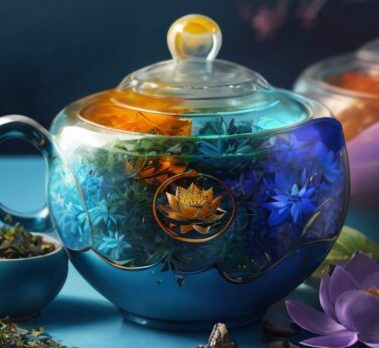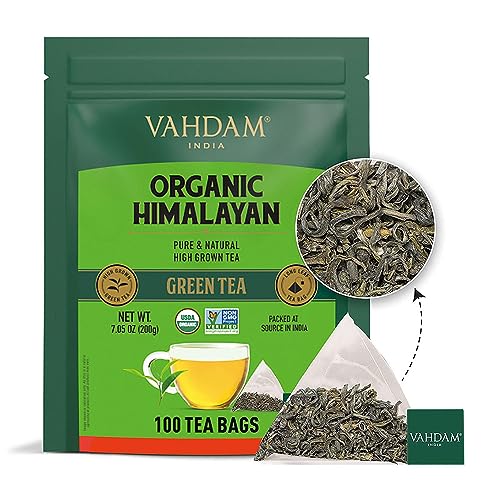Are you looking for the best green tea that suits your taste? This step-by-step guide has got you covered! Whether you’re new to green tea or a seasoned enthusiast, this guide will provide you with all the information you need to make the perfect choice.
Discover Our Popular Green Tea Selection!
1. Understand the Types of Green Tea
Learn about the different types of green tea available:
- Sencha: This is the most common type of green tea in Japan and has a refreshing, grassy flavor. Try Sencha from Kyoto for a crisp taste.
- Matcha: A powdered form of green tea, Matcha has a vibrant green color and a rich, umami flavor. Make a cup of ceremonial Matcha by whisking the powder with hot water.
- Gyokuro: Known for its sweet, mild flavor, Gyokuro is grown in the shade before harvest, which enhances its taste. Experience the smoothness of Gyokuro from Kagoshima.
- Genmaicha: This unique green tea includes roasted brown rice, giving it a nutty flavor. Enjoy a cup of Genmaicha for a toasty, aromatic experience.
Explore the world of green tea by trying each type and discover the flavors and characteristics that suit your taste buds.
2. Consider the Origin
- Discover green teas: Start by researching and exploring the different green teas available from various regions, such as China, Japan, Korea, and India.
- Understand distinct flavors: Learn about the distinct flavors that each region’s green tea offers. Taste and compare the earthy, vegetal flavors of Chinese green tea with the sweeter and more delicate taste of Japanese green tea, for example.
- Savor unique aromas: Experience the wide range of aromas present in different green teas. From the rich floral scents of some Chinese green teas to the seaweed-like aroma of Japanese green teas, each region’s green tea offers a unique olfactory experience.
- Learn about processing methods: Dive into the fascinating world of green tea production. Understand the various processing methods employed by different regions, such as steaming in Japan or pan-firing in China.
- Expand your knowledge: Read books, watch documentaries, or join online communities to gather more information about the characteristics and qualities of green teas from different regions.
By exploring green teas from various regions, you can indulge in a diverse and enlightening tea experience.
3. Decide on Loose Leaf or Tea Bags
When it comes to brewing tea, one important decision to make is whether to use tea bags or loose leaf tea. Each option has its own perks and can impact the taste and overall tea-drinking experience. To determine which one is right for you, consider a few factors.
First, think about convenience. If you’re looking for a quick and hassle-free brewing process, tea bags might be the way to go. They are pre-packaged, making it simple to just drop them into hot water and steep. Tea bags are also easy to carry and store, making them ideal for on-the-go tea drinkers or those with limited space. However, keep in mind that tea bags may not always offer the same flavor and aroma as loose leaf tea.
On the other hand, if you prioritize authenticity and flavor, loose leaf tea could be the better option. Loose leaf tea is made up of whole tea leaves, allowing for a more nuanced and robust flavor profile. The leaves have more room to expand during steeping, resulting in a more flavorful and aromatic cup of tea. While brewing loose leaf tea requires a little more effort, it can be a rewarding and enjoyable process for tea enthusiasts.
Ultimately, deciding between tea bags and loose leaf tea boils down to personal preference. Consider whether convenience or flavor is more important to you, and choose the method that best suits your needs. Regardless of your choice, experimenting with different teas and brewing methods can be a delightful journey to finding your perfect cup of tea.
4. Explore Flavor Profiles
To expand on the guide titled “Explore Flavor Profiles,” you should experiment with different flavor profiles to discover the ones that appeal to you. Start by considering your personal preferences and then try samples of flavors such as grassy, vegetal, floral, nutty, or seaweed-like.
First, take a moment to think about the types of flavors you usually enjoy. Are you a fan of fresh and green tastes? Do you prefer more earthy or floral notes? Once you have an idea of your preferences, it’s time to start exploring.
Next, seek out different samples or products that offer these various flavor profiles. Look for foods, beverages, or even seasonings that are known for their distinct taste profiles. For example, you could try different types of green teas for grassy or vegetal flavors, explore different types of nuts for nutty profiles, or even experiment with seaweed-based snacks for a unique seaweed-like taste.
Make sure to take notes and pay attention to how each flavor profile resonates with your palate. Keep track of the ones you enjoy the most and consider incorporating them into your cooking or dining experiences. The key is to have fun and discover new flavors that truly appeal to your taste buds. Happy exploring!
5. Consider Caffeine Levels
Consider the caffeine content of green tea before making your choice. If you are looking for a milder stimulant effect, opt for teas with lower caffeine levels. To do this, choose varieties such as sencha or bancha, as they generally contain less caffeine compared to matcha. Remember that the caffeine levels in green tea can vary, so it’s always a good idea to check the packaging or do a quick online search for information on caffeine content. By being mindful of the caffeine levels in your green tea, you can find the perfect balance for your desired stimulant effect.
6. Read Reviews and Recommendations
To get the most out of your green tea experience, don’t forget to read reviews and seek recommendations from fellow green tea enthusiasts. These tips will help you make an informed decision and immerse yourself in the wonderful world of green tea:
- Explore online review platforms: Browse through popular review websites or apps that specialize in food and beverages. Look for reviews specifically about green tea and read what others have to say about their favorite brands and flavors.
- Join online communities: Become a part of online forums or social media groups dedicated to green tea. Engage with other members, ask for recommendations, and share your own experiences. This way, you can tap into the collective wisdom of avid green tea drinkers.
- Attend local tea events: Check if there are any tea festivals, workshops, or tasting events happening in your area. These gatherings are excellent opportunities to meet tea experts and enthusiasts who can give you personalized recommendations on their favorite green tea brands and brewing techniques.
- Seek recommendations from trusted sources: Ask friends, family, or colleagues who are green tea lovers for their recommendations. They might have great insights and hidden gems to share, based on their own experiences.
Remember, reading reviews and seeking recommendations from others is not only a great way to discover new brands or types of green tea but also a chance to connect with fellow tea enthusiasts who share your passion for this delightful beverage. So dive in, explore, and savor every sip of your green tea journey!
Finding Your Perfect Cup
So there you have it! By following these guidelines, you can easily find the best green tea to satisfy your unique taste buds. Remember to familiarize yourself with the different types, think about where it’s from, weigh the options between loose leaf and tea bags, explore the flavors you’re interested in, factor in caffeine levels, and check out reviews and recommendations. With all this knowledge, you’ll be able to make an informed decision and enjoy the delightful flavors and health benefits of green tea. Happy sipping!
Discover Your Perfect Brew
- Consider the type of green tea: Some popular types include Sencha, Matcha, Gunpowder, and Jasmine. Research about the different flavors and characteristics of each to find the one that suits your taste buds the best
- Determine the origin: Green tea is grown in various regions around the world, each offering a distinct flavor profile. Japanese green tea tends to be grassy and slightly sweet, while Chinese green tea can have a nutty or floral taste. Explore teas from different origins to find your preference
- Assess the grade: Green teas come in various grades, which can affect the taste and quality. Higher grades usually have a more delicate and vibrant flavor. Look for terms like “premium” or “first flush” to ensure you’re getting a quality tea
- Decide on loose leaf or tea bags: Both loose leaf green tea and tea bags have their advantages. Loose leaf tea generally offers better quality and flavor, while tea bags provide convenience. Consider what is more important to you
- Experiment with flavorings: If you prefer flavored green tea, try different options such as mint, citrus, or fruit infusions. These can add a unique twist to the traditional green tea flavor
- Consider caffeine content: Green tea contains caffeine, although it is generally lower than in black tea or coffee. However, if you are sensitive to caffeine, you may want to opt for decaffeinated green tea or choose a lighter variety
- Read reviews and recommendations: Check out online reviews or ask friends and family for their green tea recommendations. Learning from others’ experiences can give you valuable insights and help you discover new teas
- Visit a specialty tea shop: If you have the opportunity, visit a specialty tea shop where you can sample different green teas before making a purchase. This hands-on experience can truly guide you in finding the best green tea for your taste
- Take your brewing preferences into account: Different brewing methods can affect the taste of green tea. Consider if you prefer to use a tea infuser, a teapot, or a traditional Japanese matcha set. Each method can result in a unique drinking experience
- Trust your taste buds: Ultimately, the best green tea for you is the one that makes your taste buds happy. Trust your palate and enjoy the process of exploring and discovering your personal favorite green tea
Getting the Most Out of Your Green Tea
- Start with the basics: Boil a cup of water and let it cool for a minute or two. Ideally, the water temperature should be around 80°C (176°F) for green tea
- Choose your green tea: There are various types available, such as sencha, matcha, or jasmine green tea. Experiment with different flavors to find your favorite
- Measure the right amount: Use 1 teaspoon of loose green tea or 1 teabag per cup of water. Adjust the amount based on your preference for a stronger or milder flavor
- Steep and wait: Pour the hot water over the tea leaves in a cup or teapot. Let the tea steep for 2-3 minutes. Avoid steeping for too long, as it can make the tea taste bitter
- Enjoy the goodness: Once the tea has steeped, strain the leaves or remove the teabag. Sip your green tea slowly to savor the flavor and relax
- Remember, the process may vary slightly depending on the type of green tea you choose, so be sure to read the specific instructions provided on the packaging. Enjoy your green tea adventure!


















